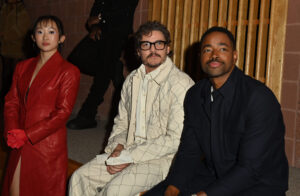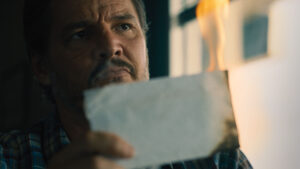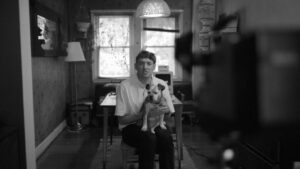Nate von Zumwalt
Sometimes the most effective documentaries are those that appear to be misclassified. Stories that, absent of a screenplay, seem decidedly fanciful and improbable. So goes Malik Bendjelloul’s Searching for Sugar Man, a brilliant film that courses with the suspense of a mystery thriller and only further entices with its veracity.
Searching seeks to track down the ‘70s Mexican-American musician Rodriguez, whose career was once destined for the annals of rock ‘n’ roll lore. Instead, a mild spark in popularity quickly flamed out, and the man heralded as the “next Bob Dylan” faded alongside. But thousand of miles away, an apartheid South Africa embraced the musician’s subversive message as a soundtrack to their strife.
Decades later, a pair of fans resolve to sift through the countless rumors detailing Rodriguez’s life and career, eventually unearthing a pivotal revelation on their way to piecing together the puzzle. Below, director Malik Bendjelloul shares some enlightening facts and little-known tales from the film’s production. Here are ‘5 Things You Should Know About the Making of Searching For Sugar Man.’
1. Unfounded rumors involving Rodriguez were plentiful.
“Rodriguez burned himself on stage” was one of the most common stories in South Africa about what had happened to Rodriguez. That was the story that was most commonly printed in newspapers. But when I walked around Cape Town and asked people in the street, I discovered that there were plenty of other stories around. He had been in jail, he had overdosed, he had been shot by a jealous lover, he was working in a garage somewhere in South America. The fact that he was wearing glasses on the cover of [his debut album] Cold Fact in combination with a line in the song “Establishment Blues,” where he sings “I opened the window and listened to the news,” made people believe he was blind. Normally you look at stuff when you open a window, you don’t listen to stuff, right? When there’s no information, rumors takes the place of truth.
2. Some scenes were shot with an iPhone.
The lack of funding forced some things to be finished in a way that initially was not intended. The first year of the production there was some money coming in that was used to shoot with a Super 8 camera. But the last three years there was almost no money coming in and it was too expensive to finish the scenes with the same camera. In the end, it proved that a one dollar iPhone Super 8 app worked just as well. The bar scene in the beginning where the producers discover Rodriguez was, for example, shot with that app.
3. It was believed that Rodriguez was from San Francisco.
Rodriguez never mentioned a city more than once in the lyrics to his songs. If he would have done that, there would have been a strong clue to where he actually came from. But San Francisco was a pretty good bet. He mentions San Francisco in the song “Jane S Piddy.” One song is called “Hate Street Dialogue,” and the word “Hate” is pronounced just like “Haight.” Haight Street is a street in San Francisco famous for its psychedelic rock scene in the late ’60s. One of the most famous residents of that area was Janis Joplin, and there’s a song on Cold Fact called “Like Janis.”
4. The film originally intended to feature more animation.
One of the big obstacles in telling the story was that Rodriguez was never filmed until he was 56 years old and came to South Africa. There were no moving images from the first half of his life. The solution I thought was to use animations, and I wrote scripts and did sketches for several minutes of animations in the movie. But because of a lack of funding, they were never possible to complete. Some of those sketches, however, were used in the final version.
5. Some questions may forever go unanswered.
In 1970, Rodriguez’s album Cold Fact was released in Detroit and track number six was a song called “Inner City Blues.” In 1971, there was another Detroit album coming out called What’s Going On, the all-time classic by Marvin Gaye. Track number nine was a song called “Inner City Blues.” The bass player on both albums was the same man, legendary bass player Bob Babbitt. I called Babbitt and asked him if there was any chance that he would have suggested Rodriguez’s title to Gaye. Bob Babbitt replied, and I believe he spoke the truth, “I don’t remember anything, I don’t even remember Rodriguez.”




